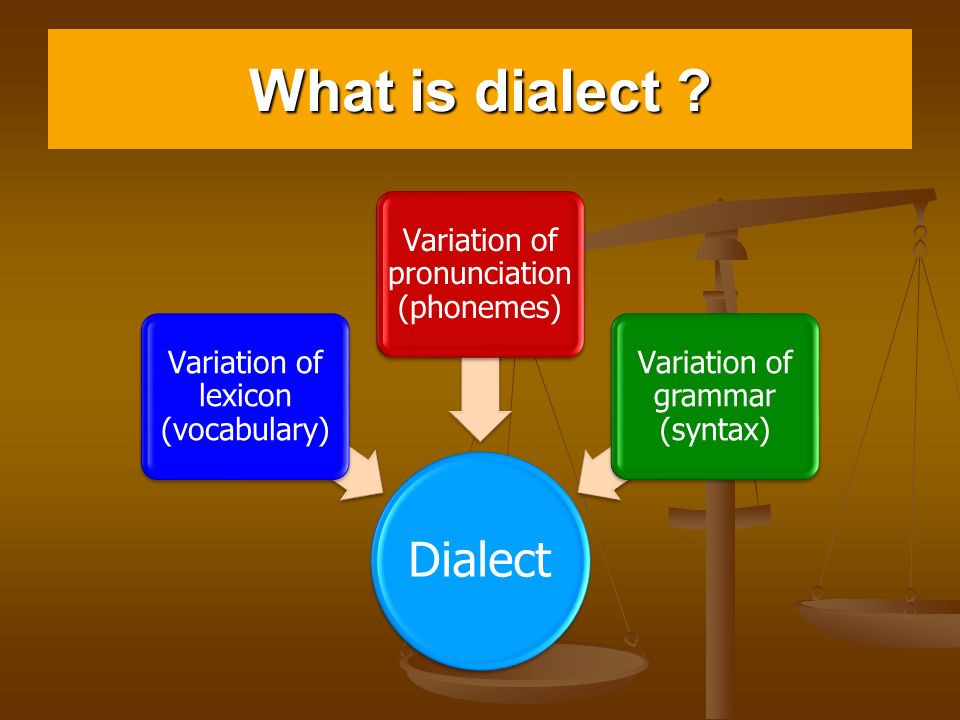Difference Between a Language and a Dialect
 A Dialect and a Language
A Dialect and a Language
The distinction between a dialect and a language is a topic that often sparks debate among linguists, language enthusiasts, and even the general public. While these terms are commonly used interchangeably, they have distinct meanings and implications. Understanding the difference between a dialect and a language can help clarify conversations about linguistic diversity, cultural identity, and even political power. This article explores these concepts and the nuances that define them.
1. Defining Language and Dialect
- Language: A language is a structured system of communication, characterized by a set of rules for grammar, vocabulary, and syntax. It serves as a primary means of communication within a large community or nation. Languages are often standardized, meaning there is a recognized version used in education, media, and official documentation. For example, English, Mandarin, and Spanish are considered distinct languages.
- Dialect: A dialect, on the other hand, is a variation of a language that is specific to a particular region, community, or social group. It may differ from the standard language in terms of pronunciation, grammar, vocabulary, and usage. For instance, the regional variations of English spoken in Scotland, Australia, and the United States are considered different dialects of the English language.
2. Mutual Intelligibility
One of the most commonly used criteria for distinguishing between a language and a dialect is mutual intelligibility. This refers to whether speakers of two language varieties can understand each other without prior exposure or special training.
- Dialects: Generally, dialects of the same language are mutually intelligible. For example, someone who speaks American English can usually understand British English, despite differences in accent, spelling, and some vocabulary.
- Languages: Languages, by contrast, are usually not mutually intelligible. For instance, a native English speaker cannot easily understand German or Chinese without learning them, as these languages have distinct grammar, vocabulary, and sounds.
However, mutual intelligibility is not a foolproof criterion. Some dialects of the same language, like certain Chinese dialects (Mandarin and Cantonese), are not mutually intelligible, yet are still considered dialects of the same language due to historical and political reasons.
3. The Role of Standardization
- Standard Language: A standard language is a form of a language that has been given a particular status and is used for official purposes, such as education, government, and media. It is often based on one of the dialects but is codified into a “standard” form that is taught in schools and used in formal communication.
- Dialects: Dialects are usually not standardized and may lack a formal written form. They are often passed down orally and can vary significantly even within small geographic areas. This lack of standardization often leads to the perception of dialects as being “lesser” forms of a language, although linguistically, they are equally valid.
4. Political and Social Factors
The distinction between a language and a dialect is not always based on linguistic criteria alone. Often, social, political, and cultural factors play a significant role.
- Political Influence: In many cases, what is considered a language versus a dialect can depend on political boundaries and historical contexts. For example, Serbian, Croatian, Bosnian, and Montenegrin are mutually intelligible and share a common linguistic heritage. However, they are considered separate languages due to political and national distinctions.
- Cultural Identity: Dialects can carry a strong sense of cultural or regional identity. People may choose to emphasize or downplay the distinctiveness of their dialect based on how they wish to identify themselves. For instance, some speakers of Scots in Scotland consider it a separate language, while others see it as a dialect of English.
5. Examples of Dialects and Languages
- Mandarin and Cantonese: Both are considered dialects of the Chinese language. However, they are not mutually intelligible in spoken form, highlighting how political and cultural factors can influence classification.
- Hindi and Urdu: These are considered separate languages due to cultural and religious differences, but they share a high degree of mutual intelligibility in their spoken forms and are based on the same grammatical structure.
- Norwegian, Danish, and Swedish: These are considered separate languages, but they are mutually intelligible to a considerable extent. The distinctions are mainly based on national boundaries and standardized forms.
6. The Grey Areas and Controversies
The distinction between a language and a dialect is not always clear-cut. Some linguists argue that “a language is a dialect with an army and a navy,” highlighting how political power can determine the status of a language. In some cases, what one person calls a dialect, another might call a language, and vice versa. This fluidity can lead to disagreements and controversies, but it also shows the richness and diversity of human communication.
Conclusion
The difference between a language and a dialect is a complex issue shaped by linguistic, social, political, and cultural factors. While mutual intelligibility, standardization, and political boundaries can offer some guidelines, they do not provide a definitive answer. Understanding this complexity allows us to appreciate the diversity of human languages and the ways in which they reflect our identities, histories, and societies. Ultimately, whether we label something a language or a dialect, it remains a vital and vibrant means of human expression.















Post Comment